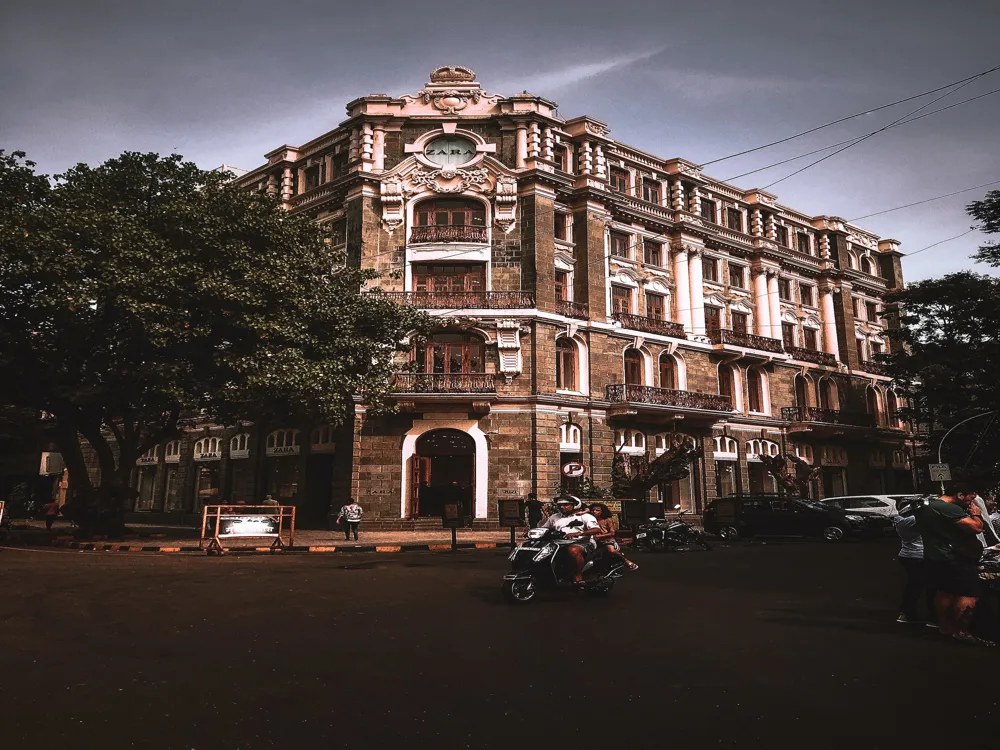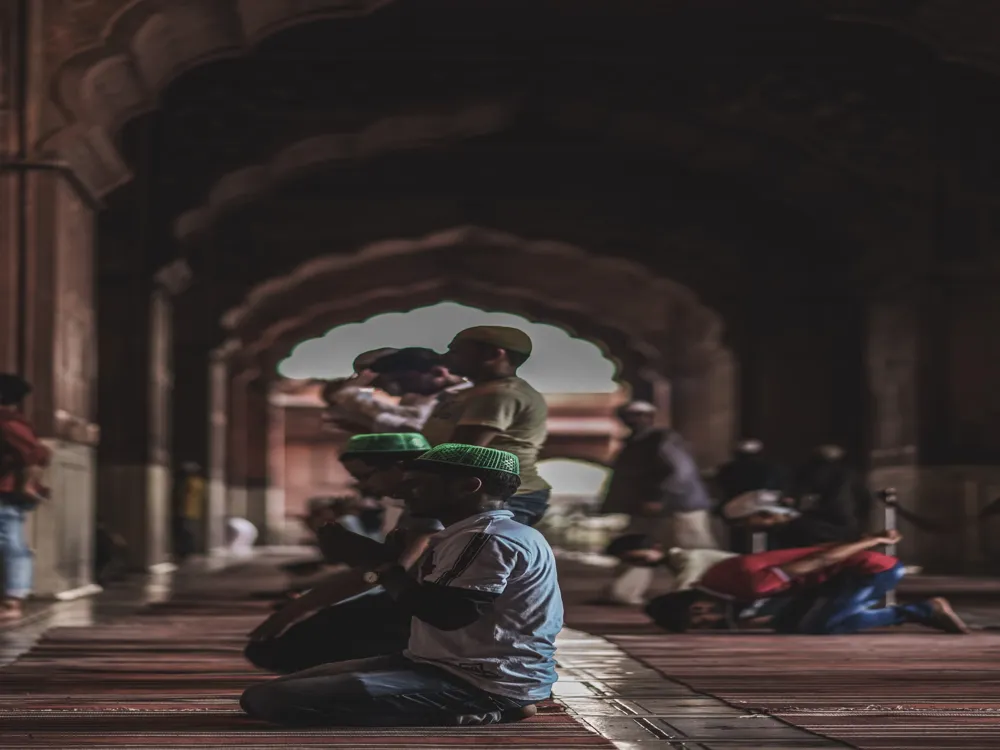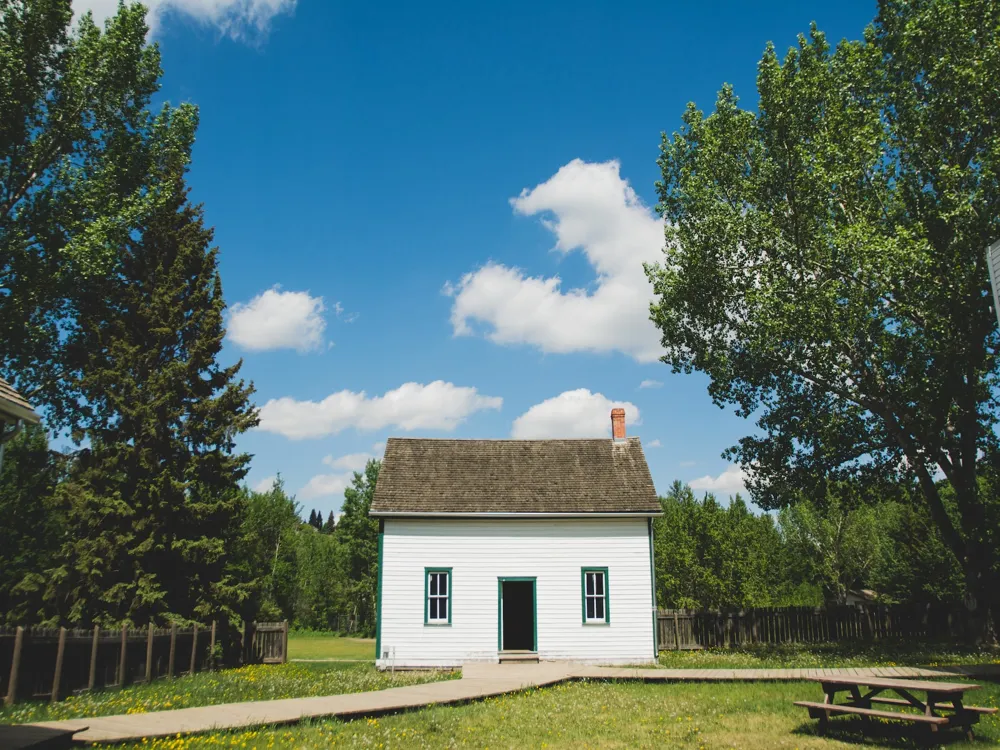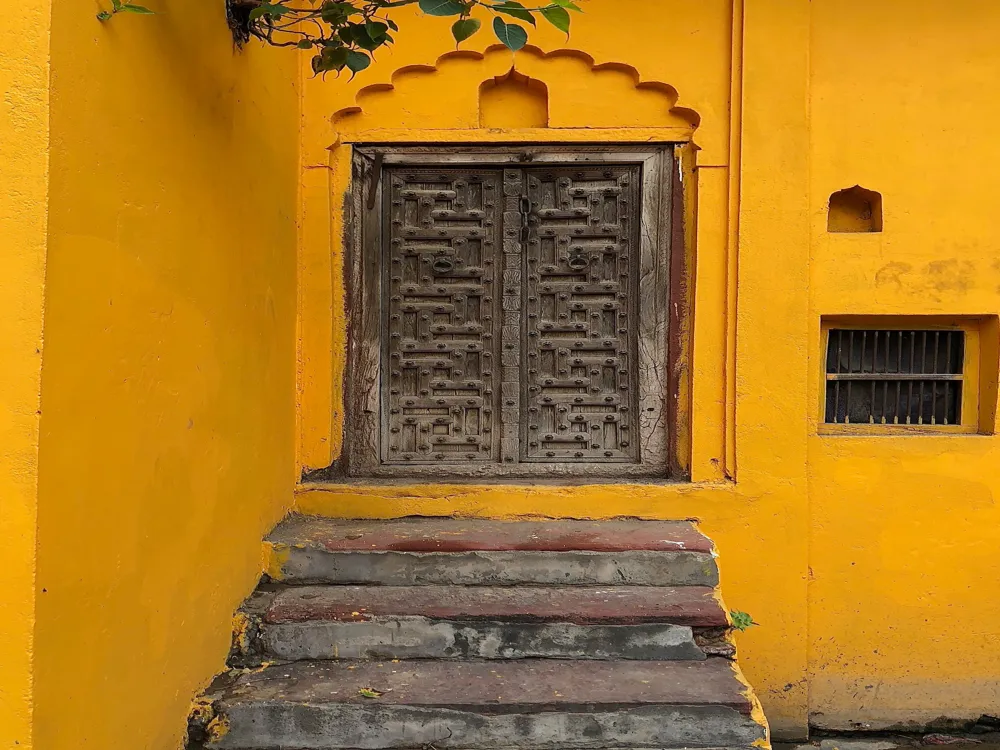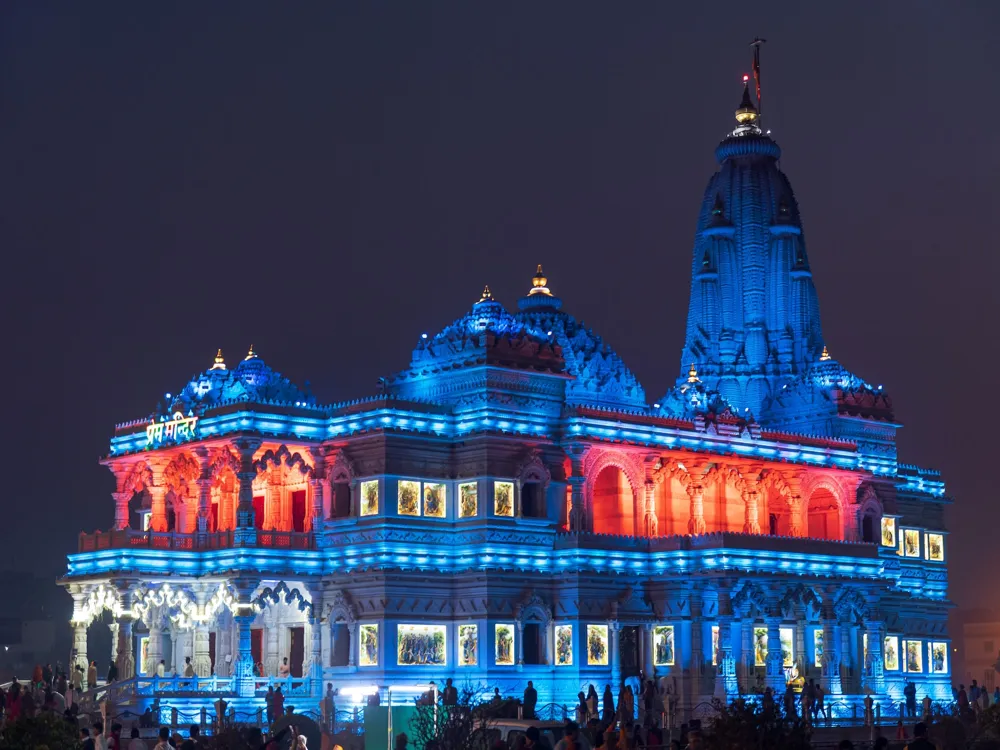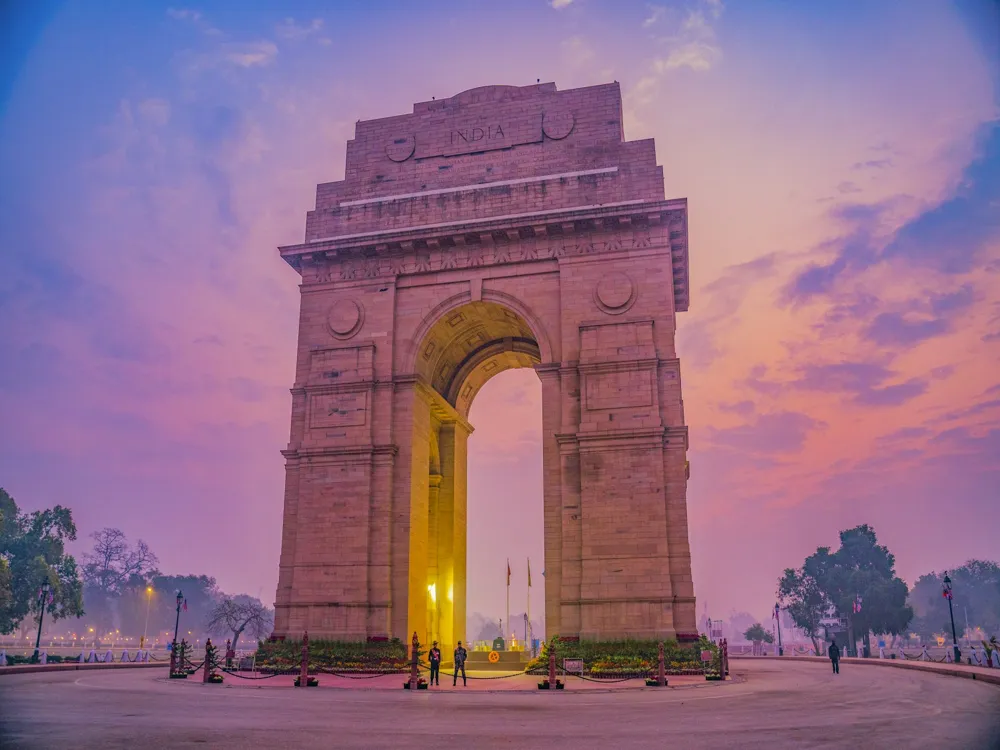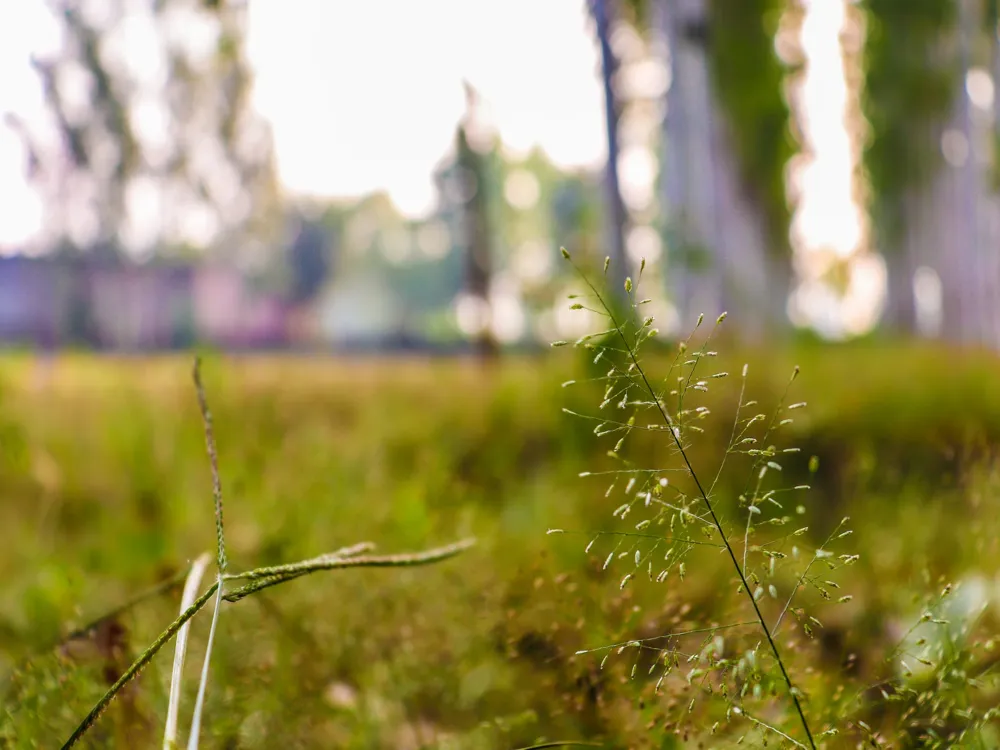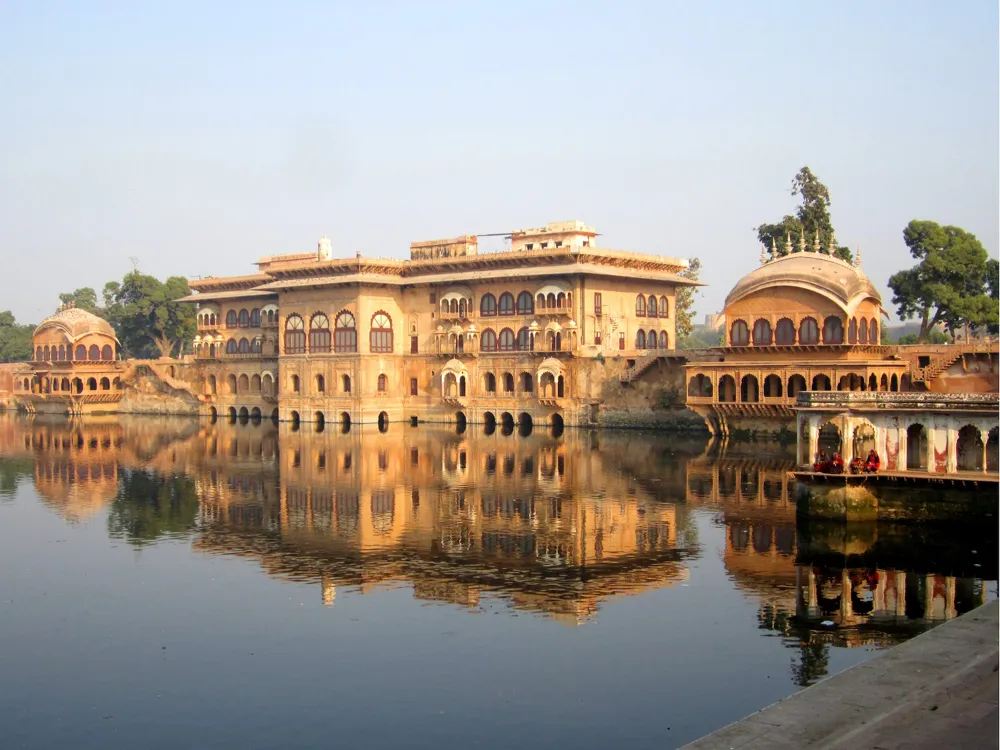Nestled in the heart of Uttar Pradesh, the Aligarh Fort stands as a testament to India's rich history and architectural brilliance. This historic fortress, located in the city of Aligarh, boasts a compelling past that dates back to the 16th century. Originally constructed by Muhammad, son of Governor Umar of Kol, under Ibrahim Lodhi's rule, the fort has witnessed numerous renovations and changes over the centuries. The Aligarh Fort, also known as Aligarh Qila, is renowned for its massive structure and strategic significance in the region. It played a crucial role in various historical events and battles, serving as a stronghold for different rulers and empires. The fort's architecture is a blend of different styles, reflecting the influences of the various dynasties that ruled over it. Its formidable walls and robust construction have withstood the test of time, offering a glimpse into India's historical and architectural heritage. Today, the Aligarh Fort stands not just as a historical monument but also as a symbol of the cultural and architectural prowess of the past. Visitors to the fort are greeted with awe-inspiring views of its battlements, gates, and the intricate designs that adorn its walls. The fort's location in Aligarh city makes it easily accessible to tourists and history enthusiasts, who come to marvel at its grandeur and delve into its rich past. The significance of the Aligarh Fort extends beyond its historical and architectural value. It serves as a reminder of the region's turbulent history and the resilience of its people. The fort's preservation and maintenance are a priority for the authorities, ensuring that future generations can continue to learn from and appreciate this remarkable piece of India's heritage. The Aligarh Fort is a marvel of architectural ingenuity, representing a blend of various architectural styles that evolved over centuries. The fort's design reflects the influences of the Lodhi dynasty, Mughal architecture, and British colonial styles, making it a unique historical structure. One of the most striking features of the Aligarh Fort is its robust walls, built with red sandstone and fortified with battlements. These walls were designed to provide maximum security against invasions and attacks. The fort encompasses several structures within its premises, including palaces, mosques, and administrative buildings, each showcasing intricate design elements and craftsmanship. The main gate of the fort, adorned with detailed carvings and motifs, is a fine example of Mughal architecture. The gate leads to a sprawling courtyard, surrounded by various buildings that served different purposes during the fort's heyday. The blend of Hindu and Islamic architectural elements in these structures is a testament to the cultural fusion that occurred during the period of its construction. The interior of the fort features elaborate arches, domes, and minarets, characteristic of Islamic architecture. The use of jali work (latticed screen) and intricate stone carvings in the palaces and mosques within the fort adds to its aesthetic appeal. The British influence is evident in some of the later additions to the fort, which include barracks and administrative buildings in colonial architectural style. The Aligarh Fort's architecture is not only about its aesthetic beauty but also about its strategic design. The layout of the fort was planned to provide strategic advantages during battles, with hidden passages, trap doors, and vantage points for surveillance. This architectural sophistication makes the Aligarh Fort a fascinating subject for study and appreciation. The ideal time to visit Aligarh Fort is between October and March when the weather is pleasant, making it comfortable for outdoor exploration. As the fort is a historic site, visitors are advised to dress modestly. Comfortable walking shoes are recommended as there is a lot of ground to cover. Consider hiring a local guide to gain deeper insights into the fort's history and architecture. Guides can be found at the entrance or pre-booked. For photography enthusiasts, the fort offers numerous picturesque spots. Early morning and late afternoon light provide excellent conditions for photography. Carry water bottles, especially during the summer months, as exploring the fort can be exhaustive. Aligarh Fort is easily accessible from various parts of India. The nearest airport is in Delhi, from where you can take a train or a bus to Aligarh. The city of Aligarh is well-connected by rail and road networks. Local transport options like taxis and auto-rickshaws are available for a convenient journey to the fort. For those traveling by train, Aligarh Junction is the nearest railway station, well-connected to major cities in India. From the railway station, the fort is just a short drive away. Buses, both state-run and private, regularly ply to Aligarh from nearby cities and towns, offering another convenient travel option. Once in Aligarh city, the fort is easily reachable through various modes of local transportation. Its central location in the city makes it a prominent landmark, easily identifiable for visitors. Read More:Overview of Aligarh Fort, Aligarh, Uttar Pradesh
Architecture of Aligarh Fort
Tips When Visiting Aligarh Fort
Best Time to Visit
Dress Appropriately
Hiring a Guide
Photography Tips
Stay Hydrated
How To Reach Aligarh Fort
Aligarh Fort
Aligarh
Uttar Pradesh
NaN onwards
View aligarh Packages
Weather :
Tags : Forts & Palaces
Timings : 8:00 AM - 6:00 PM
Time Required : 1 - 2 hours
Entry Fee : No entry fee
Planning a Trip? Ask Your Question
Aligarh Travel Packages
View All Packages For Aligarh
Top Hotel Collections for Aligarh

Private Pool

Luxury Hotels

5-Star Hotels

Pet Friendly
Top Hotels Near Aligarh
Other Top Ranking Places In Aligarh
View All Places To Visit In aligarh
Faq on Aligarh
What is the significance of Aligarh Fort?
Aligarh Fort served as a strategic stronghold and played a crucial role in the region's history due to its military significance.
Can visitors explore Aligarh Fort?
Yes, visitors can explore Aligarh Fort and witness its historical architecture and remnants.
What are the timings for visiting Aligarh Fort?
The timings for visiting Aligarh Fort may vary, it's advisable to check with local authorities or guides for the latest information.
Are there any entry fees for visiting Aligarh Fort?
Entry fees, if any, for visiting Aligarh Fort might apply. It's recommended to inquire about entry fees beforehand.
What are the architectural features of Aligarh Fort?
Aligarh Fort showcases various architectural styles, including Mughal and Indo-Islamic influences, characterized by its sturdy walls, bastions, and gateways.
View aligarh Packages
Weather :
Tags : Forts & Palaces
Timings : 8:00 AM - 6:00 PM
Time Required : 1 - 2 hours
Entry Fee : No entry fee
Planning a Trip? Ask Your Question
Aligarh Travel Packages
View All Packages For Aligarh
Top Hotel Collections for Aligarh

Private Pool

Luxury Hotels

5-Star Hotels

Pet Friendly
Top Hotels Near Aligarh
Other Top Ranking Places In Aligarh
View All Places To Visit In aligarhFaq on Aligarh
What is the significance of Aligarh Fort?
Aligarh Fort served as a strategic stronghold and played a crucial role in the region's history due to its military significance.
Can visitors explore Aligarh Fort?
Yes, visitors can explore Aligarh Fort and witness its historical architecture and remnants.
What are the timings for visiting Aligarh Fort?
The timings for visiting Aligarh Fort may vary, it's advisable to check with local authorities or guides for the latest information.
Are there any entry fees for visiting Aligarh Fort?
Entry fees, if any, for visiting Aligarh Fort might apply. It's recommended to inquire about entry fees beforehand.
What are the architectural features of Aligarh Fort?
Aligarh Fort showcases various architectural styles, including Mughal and Indo-Islamic influences, characterized by its sturdy walls, bastions, and gateways.







